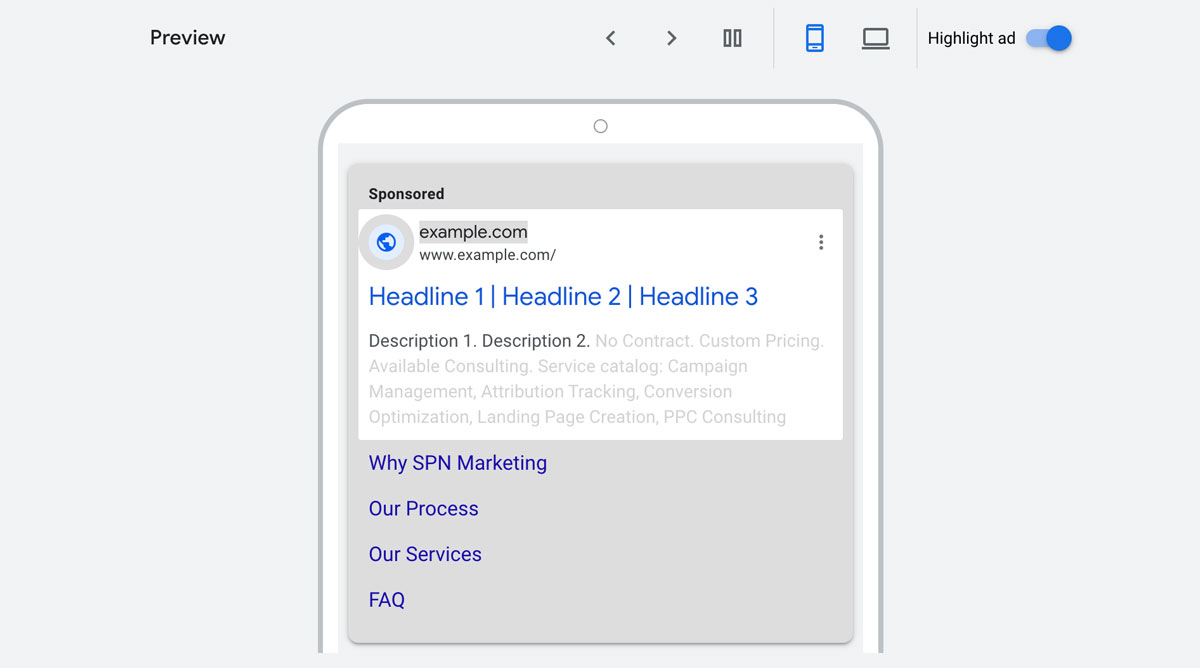In today’s dynamic digital landscape, creating ads that are both relevant and helpful for each search query is a significant challenge. This is where responsive search ads come into play. These ads use Google AI to deliver the right ad to the right person, making them a crucial tool for businesses. This article explores the various tools that can assist in creating high-quality responsive search ads.
Understanding Responsive Search Ads
Responsive search ads are a type of ad that uses Google AI to identify the best combination of headlines and descriptions for each query. This means that the more diverse assets you provide, the more combinations that can be used to deliver ads that are relevant to each of your potential customers. There are also cases where you may need an asset to always show for your ads. This is known as pinning and is typically used to remain compliant with local regulatory requirements.
The Process of Generating Responsive Search Ads
Responsive search ads are generated through a three-step process:
- Understanding the context of each query and keyword used for matching.
- Assembling combinations from the available assets based on relevance and expected performance.
- Removing duplicates, reviewing for redundancy, and scoring the creative combinations.
This process ensures that the ads delivered are relevant and have the potential to perform well for each query.
Ad Strength: A Key Feedback Mechanism
Ad Strength is a tool that provides feedback on how closely the assets within your responsive search ad reflect attributes that are correlated with increased performance. You can use Ad Strength in Google Ads, Google Ads Editor, and Google Ads API. The components of Ad Strength update as you make changes to your ad, providing forward-looking feedback to help you understand where you can make improvements.
Tools for Creating High-Quality Assets
There are several tools available to assist in creating high-quality creative assets:
- Asset suggestions: These are headline and description assets shown when you create or edit a responsive search ad. They are generated once a Final URL has been provided and are relevant to each responsive search ad’s unique context.
- Recommendations for improving Ad Strength: These are shown to help improve the quality of your responsive search ads. They are shown for ads with “Poor” or “Average” Ad Strength and include asset suggestions.
- Automatically created assets: This is an opt-in, campaign-level setting. Once enabled, the system will generate tailored headline and description assets based on the unique context of each responsive search ad.
Evaluating the Effectiveness of Responsive Search Ads
It’s important to focus on improving business outcomes for your ads. There are several tools available to evaluate the effectiveness of your responsive search ads, including asset performance ratings and insights. These tools provide a retrospective view of the effectiveness of individual assets and show the searches that your ad is performing well on, including changes over time.
AI-Ready Account Structure for Optimal Results
For optimal results, it’s recommended to use AI-powered solutions across your bidding, keywords, and ads. This includes Smart Bidding, broad match, and responsive search ads. Simplifying your account structure can also make it easier to manage and can help AI-powered solutions deliver better performance.
Conclusion
Creating high-quality responsive search ads is crucial in today’s dynamic search landscape. By using the right tools and strategies, you can improve the performance of your ads and achieve your business objectives. So, start experimenting with these tools and strategies today to see the difference they can make.
This article provides a comprehensive guide to the tools available for creating high-quality responsive search ads. By using these tools effectively, you can improve the performance of your ads and achieve better results for your business.


